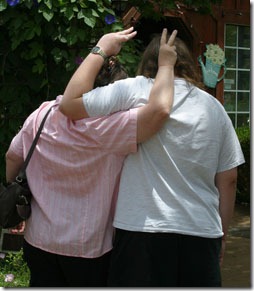Translating Alien Gestures
Original Post: 25 June 2012
Posted Here: 4 December 2017
 “Silflay hracka, U embleer rah!” Would Richard Adams’ epic novel, Watership Down, have been such a big hit if it had been written entirely in the language, Lapine, of his rabbits?
“Silflay hracka, U embleer rah!” Would Richard Adams’ epic novel, Watership Down, have been such a big hit if it had been written entirely in the language, Lapine, of his rabbits?
As I pointed out in my Languages post, my science fiction is written in English, mostly, but many of my characters are not English-speaking humans. They belong to alien races who have their own languages, so their dialog must be “translated” into English to be comprehensible.
Languages, however, contain sayings and idioms unique to their culture. These have meanings that are not necessarily obvious from the words they contain. If we speak of something being “the icing on the cake,” you and I know what is meant. We also know that it has nothing do do with a sweet confection. Whenever possible, I “translate” alien language sayings and idioms literally into English. For instance, the Adondi idiom which corresponds to our “the icing on the cake” is “the sunset on the mountain peaks.” When read in context, I think idioms like these are understandable.
Gestures are a feature of language that I have given scant attention, although they can be, just as in real life, an important part of storytelling. If you ask me, “Is your wife, Janet, a good cook?”, I could reply wordlessly by nodding my head. You would know that I meant “Yes.” If I nodded vigorously, you would know that I meant “Yes!!!” But what would you think if I blinked my eyes several times in answer to your question?
If I wrote that Baroo asked Pierre Bordeaux, a skink, if he likes punkin grubs and that Pierre responded by nodding his head, you would probably understand that he finds them delicious. Of course, you might ask, “Why is this alien using a human gesture?” Unfortunately, a gesture, unlike an idiom, is not easily understandable from the context of the reply, unless you know what the reply should be. Writing that Pierre had responded by blinking his eyes would not have communicated “Yes” to you unless you already knew the meaning of the gesture.
It wasn’t until I was doing one of my many revisions to Chapter 23, Grimace, of my novel-in-progress, The Centaurian Bud Vase, that I realized that I needed to take a stand. As I said, I have given scant attention to how I express gestures. I certainly have not been consistent. What’s a writer to do with alien gestures?
Option 1: Gestures could be left out—ignored. We usually omit most of those uhs, ahs and misspoken words from our written dialog, as well as minor gestures (that’s what your imagination is for). However, I believe that including gestures along with or instead of the dialog is an important part of “show, don’t tell.” Gestures help us to visualize our characters and to see how they are reacting.
Option 2: Aliens’ gestures, like their dialog, could simply be translated into English. Everyone can visualize what’s going on and what is meant. The story flows smoothly. But does it? This could actually be a stumbling point if you ask yourself, is this an alien or a human in an alien-suit? Why would a skink nod to indicate “yes”? Perhaps I have seen too many humans in alien-suits, because this is what I usually do. Maybe I shouldn’t.
Option 3: A bit of dialog or internal monolog could accompany the alien’s gesture: “Yes,” Pierre said, blinking his eyes several times. A mini-info-dump might work in some instances: Pierre blinked his eyes several times, the skink equivalent to nodding his head. A combination of these two might be needed the first time the gesture is used, then one or the other, as appropriate, if needed for a reminder.
I’m beginning to think that I should try a fourth option, one based on the technique pioneered by Richard Adams as he wrote Watership Down. Adams invented a language, Lapine, for his rabbit characters. Most of the time, their dialog was rendered in English. When he wanted to give the reader a more intimate feel for the rabbit culture and behavior, he would introduce the Lapine version of a word. When the word came up again, he would use the Lapine word again. The reader already knew its meaning and it did not interrupt the flow of the story. As the novel progressed, Adams introduced another Lapine word, then another, then another…
Option 4: Most of the time I will translate alien gestures into English along with the spoken words. I really doubt that many readers are going to stop to ask “Why did that alien just laugh, nod his head, or frown?” She’ll visualize it, understand what’s going on, and move smoothly to the next part of the story. (What sort of gestures did the animal characters in Madagascar 3 use?) When I want to give the reader a more intimate feel for the alien culture or character, I’ll describe the alien gesture using one of the techniques described in Option 3. When the gesture comes up again, the reader will know what the alien gesture means (perhaps with an occasional reminder) and the story will flow as smoothly as if the gesture had been translated into English.
Of course, that means that I’ve got twenty-two other chapters of The Centaurian Bud Vase, the entire novel, Silver Threads, and a gaggle of short stories to revisit. Should keep me out of trouble for a while.
Keep reading/Keep writing - Jack